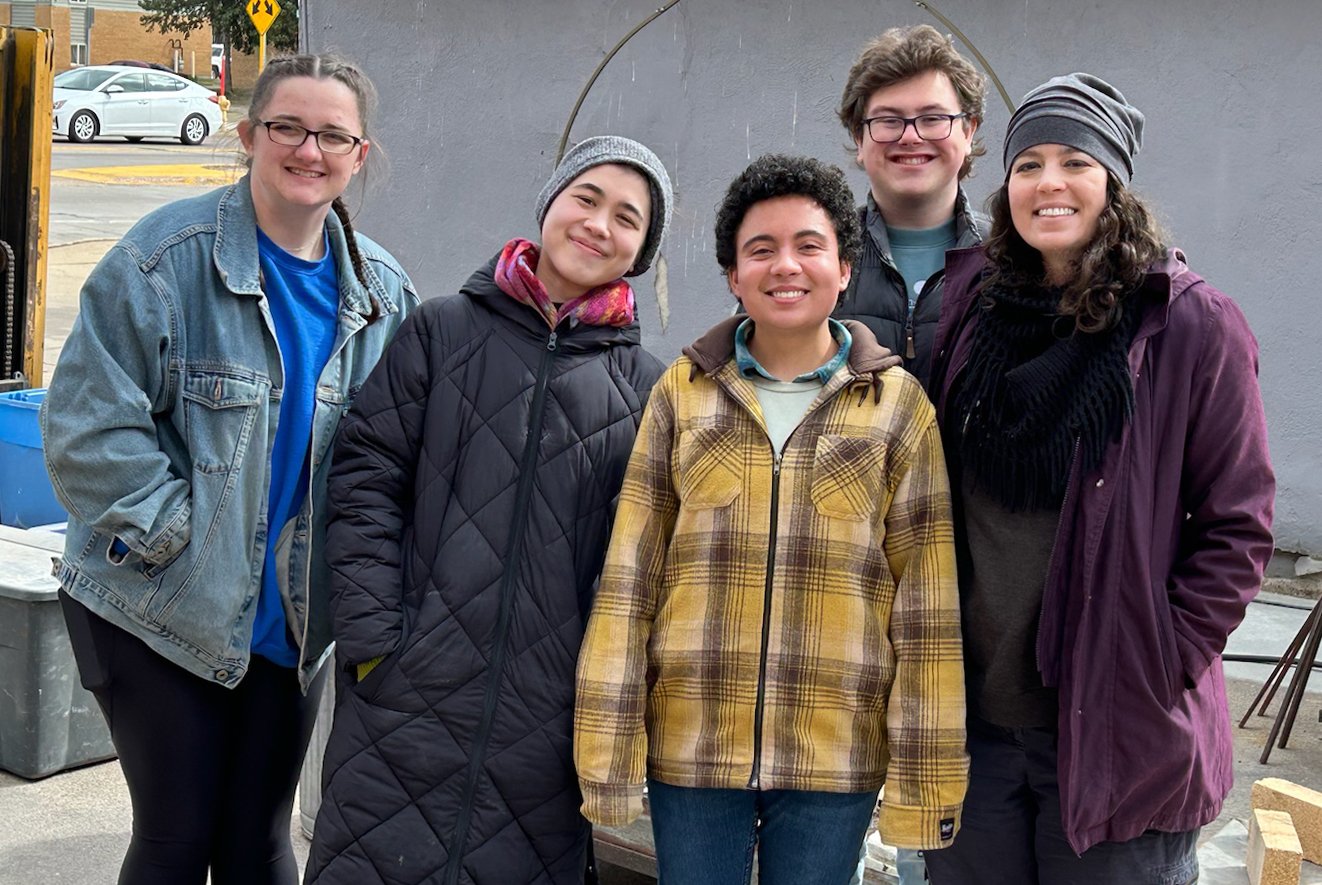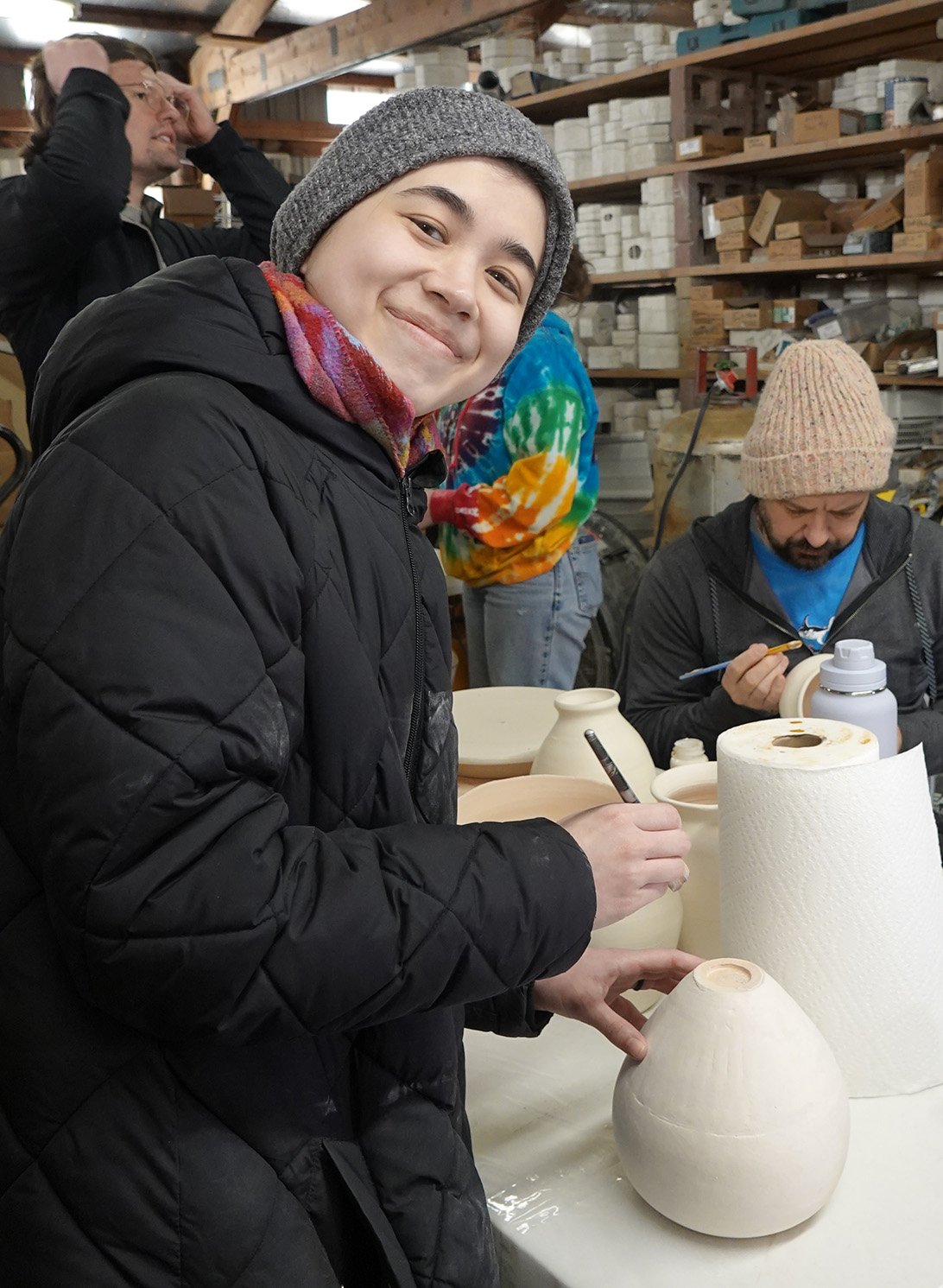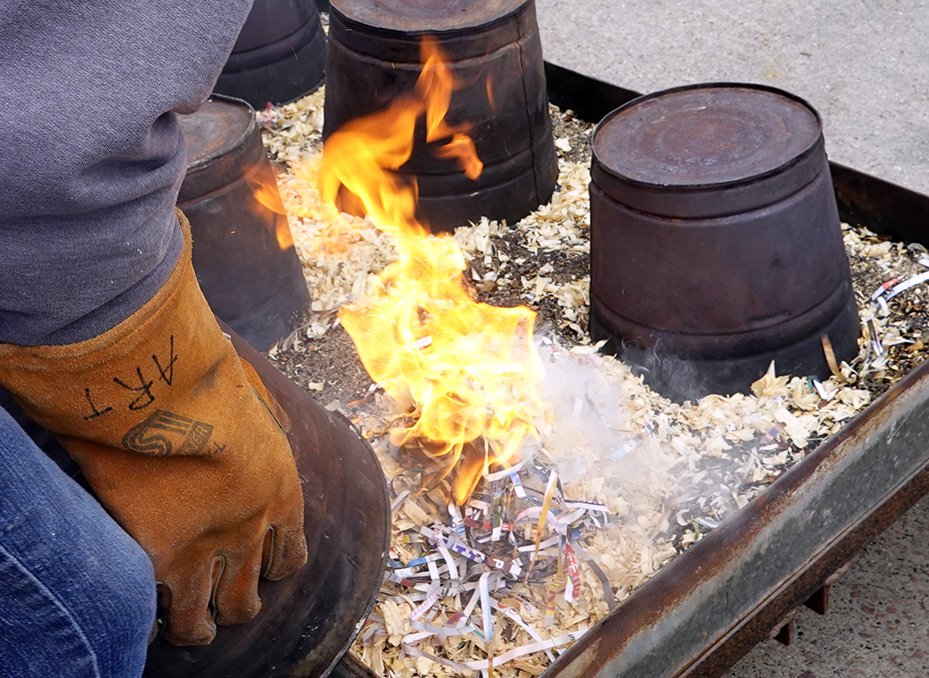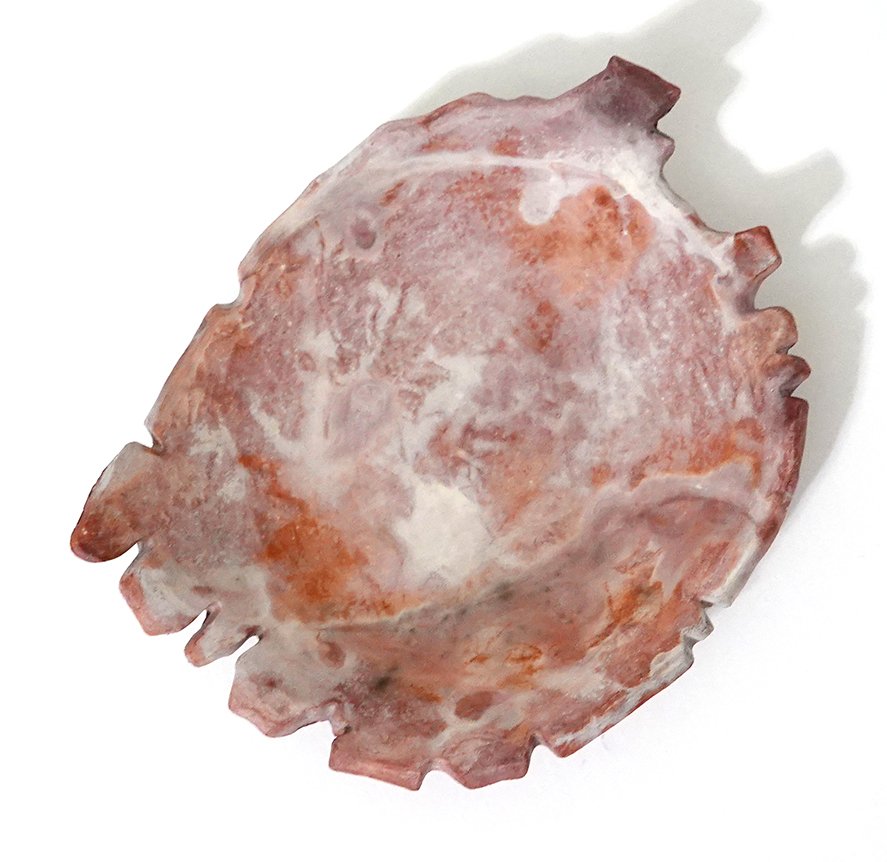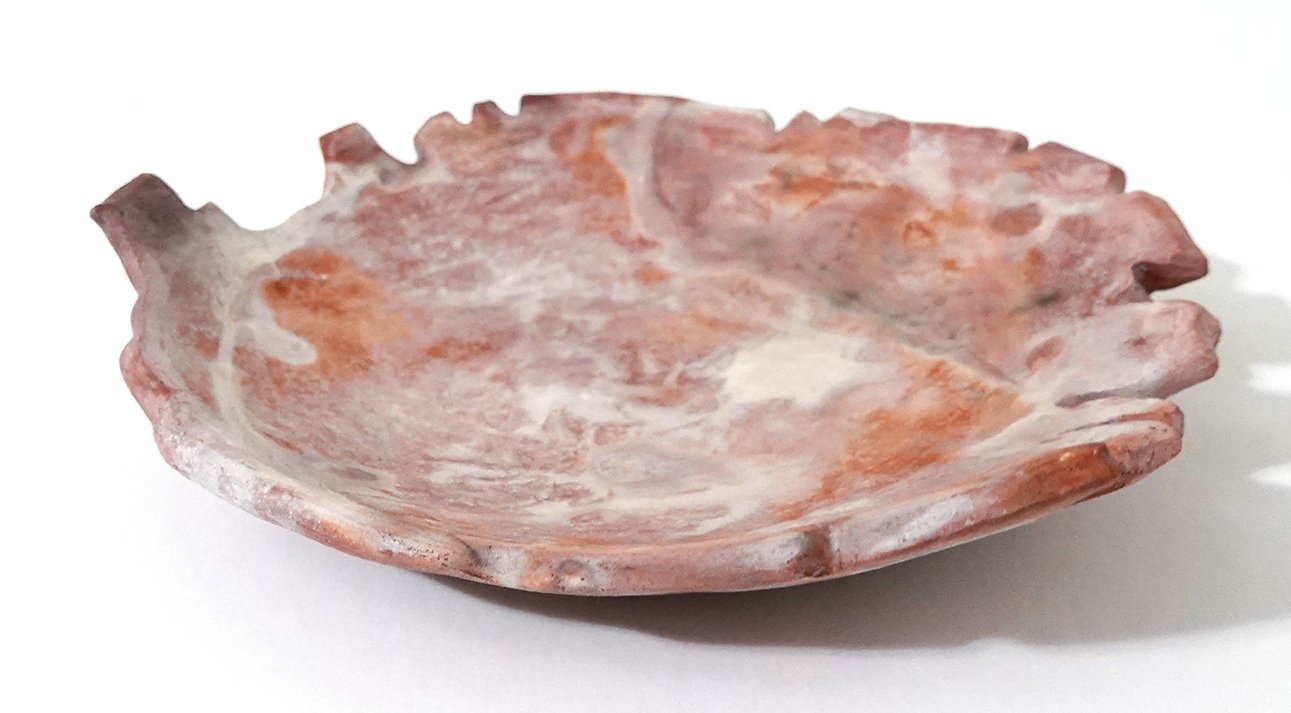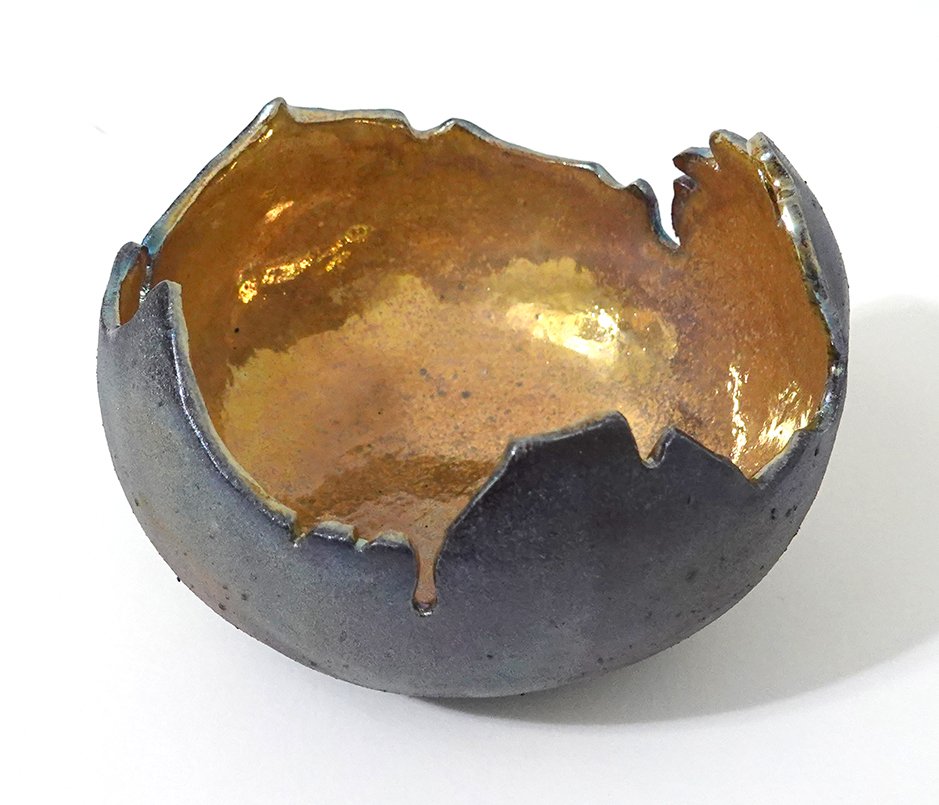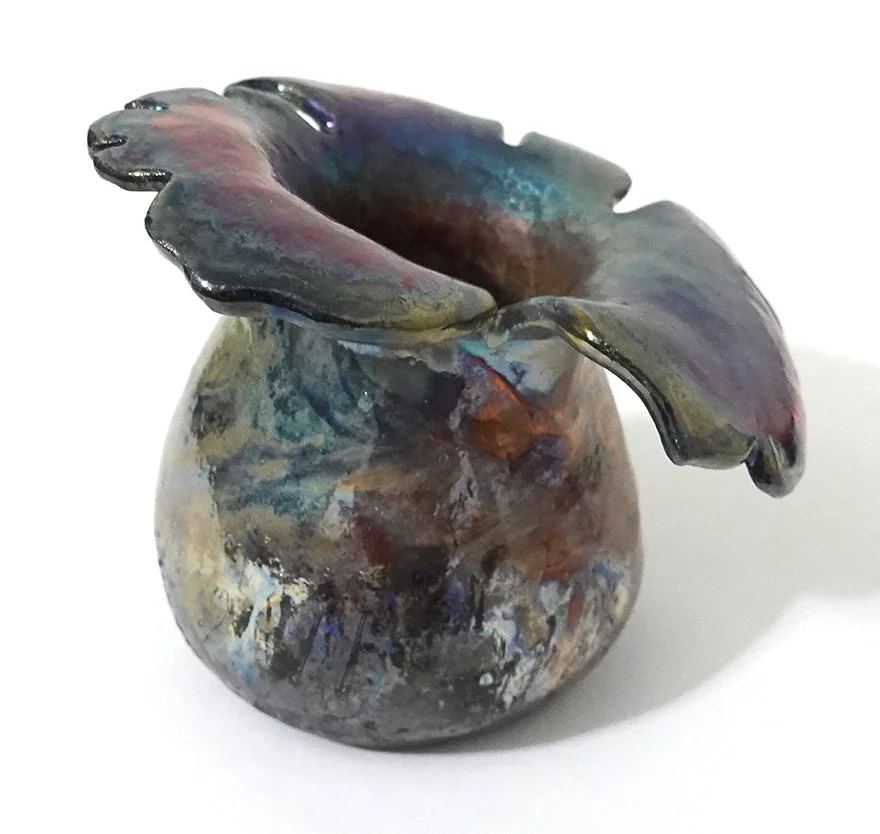This Saturday (October 18th), my colleague who teaches our ceramics coursework and I went to another raku ceramics workshop at Dakota Potters Supply! We were supposed to bring two alumnae, but they ended up ultimately unable to come. I’ll share the results after I photograph them, but here are a few photos from the day. I did a bit of obvara and the rest I ferric chloride dipped and then saggar fired. It was, as always, a fun event!
SD
Upcoming: Terra Traces Solo Show at Coyote Gallery in Vermillion, SD!
I’m also excited to share that I’ll have a solo show Terra Traces at Coyote Gallery in Vermillion, South Dakota, from July 17 - August 31, 2025. The reception will be on Saturday, July 19th from 3-5pm. I hope there’s good turnout!
The Vermillion Cultural Association operates the First Dakota Coyote Gallery (colloquially called Coyote Gallery) which is located at 12 E. Main Street, Vermillion, SD 57069. Below is the show poster designed by Vermillion Cultural Association Executive Director Shannon Cole!
April 2025 Raku Workshop!
My colleague Paul Adamson and I brought a large group of Morningside community members to another raku ceramics workshop at Dakota Potters Supply on April 26, 2025!
Here are some photos from the day, which will be followed by posts about my pieces (once I get them photographed and edited).
Upcoming: Food for People Invitational Group Exhibition at the USD Art Galleries
I’ve been invited to exhibit an artwork in the upcoming group show Food for People at the University of South Dakota Art Galleries, which “seeks to build community through thoughtful discussion of food.”
The show will run March 4 - April 1, 2025 with a closing reception on Friday, March 28th from 5 - 7pm. The address is: University Art Galleries, 414 East Clark Street, Vermillion, SD 57069.
My Curated USD Student Art Show Debuts Tomorrow!
Today I selected artwork for USD's Fall 2024 Student Art Exhibition and helped install the show, which will have its opening reception tomorrow (Thursday, December 12th) from 7-9pm at Cee Cee's Gallery in Vermillion, South Dakota. If you are planning on coming based on my previous post about this, note the updated time.
As long as the weather isn’t frightful, I plan to be in attendance at the reception as well - so I may see you there!
Upcoming: Artist Talk at the University of South Dakota
I’ve been invited to give an artist talk at the University of South Dakota (USD) in Vermillion, South Dakota on Monday, November 18th at 2pm in the Warren M. Lee Center for Fine Arts! This event is open to the public - if you’re interested in attending, here is the Facebook event page for it.
Both beforehand and afterwards, I will hold studio visits with individual students, and later in the semester will guest curate USD's Fall 2024 Student Art Exhibition, which will have its reception on Thursday, December 12th from 6-8pm at Cee Cee's Gallery in Vermillion, South Dakota.
I’m very excited to connect with the USD art students, faculty, and community in each of these ways! Many thanks to USD’s Associate Professor of Art Amber Hansen for these invitations.
Another Raku Workshop!
My ceramics colleague Paul and I attended another Dakota Potters Supply raku ceramics workshop this past weekend! I was fortunate enough to receive partial funding from the Morningside Fall 2024 Faculty Conference Travel Fund, which allowed me to really experiment with new techniques.
We were hoping to bring three students along as well, but trimming disasters and a rescheduled athletic event took two out in advance and illness struck the third on the morning of the workshop. Fortunately, there were a bunch of other artists in attendance and Paul and I had brought quite a few pieces to finish, so we still had a lot of opportunities to learn and grow. I tried a new-to-me technique out, significantly improved in my honey raku technique, and picked up supplies to test out a method in our upcoming workshop in April that I saw another artist successfully using! I also demonstrated some techniques other artists in attendance hadn’t yet been exposed to, so there was a productive exchange of information all around.
Here are a few photos from the day itself, and once I’ve had time to photograph the pieces I made, I’ll do a series of posts on the artwork.
Obvara and Slip Resist Naked Raku Workshop
I just got back from another raku workshop at Dakota Potters Supply in Sioux Falls, SD! I brought along a group of faculty, alumnae, and students from Morningside University.
This workshop specifically focused on obvara and slip resist naked raku. I really like obvara, but since I just did a bunch in the fall, I only put four pieces through the obvara process and ran ten through two slip resist processes: one-step and two-step slip resist. Dakota Potters Supply had tried to troubleshoot the slip resist one-step process in advance of our workshop, but they really hadn’t figured it out so we were all experimenting and troubleshooting with our the slip resist attempts throughout the day.
I still need to edit the photos of my pieces - plus, two of them were underfired enough that Dakota Potters Supply kept them back to refire again later, so I don’t know when those might rejoin me (if they stay whole)!
Here are photos from the day of the workshop (Saturday, April 20, 2024):
April 2023 Raku Crackle and Saggar Ceramics
This is my second post reviewing my April 2023 raku workshop ceramics! This one will cover two of my three “baked potato” aluminum foil saggar-fired ceramics and my clear crackle piece.
Based on my experimentation using plants at my April 2022 raku workshop, I only had real luck with saggar firing Muehlenbeckia axillaris, colloquially known as Creeping Wire Vine. I therefore used it again! Below is a plate that was dipped in three coats of ferric chloride and then wrapped in the vine and then aluminum foil and fired. The Muehlenbeckia axillaris impact is relatively subtle because it mostly went white to medium gray, but the plate overall turned out well. The very first time I did this “baked potato” technique, I used a matte clear acrylic spray. The second time, I went with gloss. I didn’t really love either, so this time, I went with applying a kitchen wax. I really like the way the wax looks, so I think that’ll be the winner moving forward!
Next, I did the same process with a vase - on this piece, I also sprinkled just a little sugar on as well for some small-scale spotting in the design. This one’s interesting as the Muehlenbeckia axillaris is more apparent, and it produced the full value spectrum on the same vase; the top vine piece is white to light grey, while the bottom vine carbonized a lot more and turned medium grey to black.
And finally, I chose to do a clear crackle on a small, necked vase. Handbuilding necked vessels is tricky, and I complicated matters with this piece by leaving my building process evident on the outside to contribute texture (while smoothing it for structure and stability on the inside). This was quite risky; I knew there was a good chance this piece could crack or break with thermal shock due to the thinner seamed areas. However, I was fortunate - it made it through the firing completely unscathed! I wanted to enhance the seams and stress spots that I had intentionally retained, so I painted over each of them and the lip of the vase with wax before glazing with Clear Crackle on the exterior. As I’ve explained before, this means the glaze doesn’t stick to the waxed areas, and the wax burns off in the kiln. The exposed, unglazed clay body then carbon traps the smoke in the post-kiln reduction atmosphere, turning a dark, smoky grey. I finished the piece by putting kitchen wax on the unglazed areas.
Again, none of the “cracks” in the below piece are structural - they are all decorative and this vase is fully sound.
April 2023 Raku Copper-Glazed Ceramics
I’m going to do a few different posts about my April 2023 raku workshop pieces because there’s a lot of good work to share. In this first one, I will review my copper-glazed pieces!
Below is a platter, which has some texture on its surface; I imprinted an equine femur into the clay body thanks to bones I was allowed to keep using from the LSU SVM anatomy lab. I first glazed it with White Crackle, then wiped the white crackle back down so that it stayed in the impressions, and also applied it to the rim. Then I glazed over the top with Copper Sand. I thought this would impact the coloration, but the white crackle (at least at that thickness) only really affected the sheen; where it was applied the glaze is glossy rather than matte. Though it’s not precisely what I envisioned, it’s a strong piece.
Next, we have a small, leaning vase. I chose to apply wax to the rim and throat. Then I glazed the exterior with Copper Sand, keeping in mind that the glaze doesn’t stick to the waxed areas. In the kiln the wax then burns off, allowing the unglazed clay body to carbon trap the smoke from the reduction afterwards. I was planning on staining the raw clay, but I ended up holding off as the variably smoky surface is interesting in its own right. I need to actually decide, as I will want to wax the raw surface if I don’t stain it.
This is probably the biggest of my raku pieces this go-round. This vase vessel has Litho Carb on the inside and Copper Sands on the outside. (I really like Copper Sand as it’s pretty predictable in its behavior for me, which is a rarity when doing raku.) The interior lip has an abalone-like appearance!
Next, we have my “golden bowl.” This piece is glazed with Dakota Potter’s new Peacock on the interior, and once again uses Copper Sand on the exterior. One of my students kept hovering her hands above it and singing reverential “aaah” noises!
And below is my final copper raku piece of the workshop! This one is an oddball shape; I wanted to push myself to make some handbuilt, necked vessels and in doing so created this flora-inspired vessel. I glazed it with Litho Carb on the inside and Midnight Luster on the outside.
Upcoming: "Haunted" at the Washington Street Arts Center
I have artwork in the upcoming group exhibition Haunted, hosted by the Vermillion Area Arts Council at the Washington Street Arts Center (located at 202 N Washington St, Vermillion, South Dakota).
This show will run from October 24-31, 2021 from 6:30-8:00pm, if you’d like to stop by and check it out! Entry fee to the exhibition will be $2 for VAAC members or $5 for non-VAAC members. Masks will be required.
Cross Off Another Bucket List Item: I've Done Raku!
I’ve always wanted to do raku firing ever since I first saw a piece of raku pottery and learned of the technique as a child - but it’s never been an opportunity I could take advantage of until now! A few months ago I attended a Saturday raku workshop at Dakota Potters Supply in Sioux Falls, SD, joined by my ceramics faculty member Paul Adamson and graduating senior Anna Uehling. Raku, first practiced in Japan, is a low-firing technique that makes use of wide temperature swings, reduction, and carbon trapping to create some really ornate artwork. Due to the low-fire nature of the process, the pieces are mostly decorative; they are neither watertight nor food-safe.
Here is a slideshow of the day’s adventures. This post will be followed by a series of posts exploring each of the three different glazing techniques I tried! There were five different techniques available, and I was most interested this first go-round in three of them.
Crackle glazes (either clear or white), with the goal that carbon gets trapped in the crackles
The “baked potato” technique, wherein you coat the bisqueware in ferric chloride, sprinkle it with sugar, salt, and/or horsehair, and then bundle it up in aluminum foil like a baked potato before firing it
Copper glazes
Ferric chloride spray
Horsehair and/or feather application
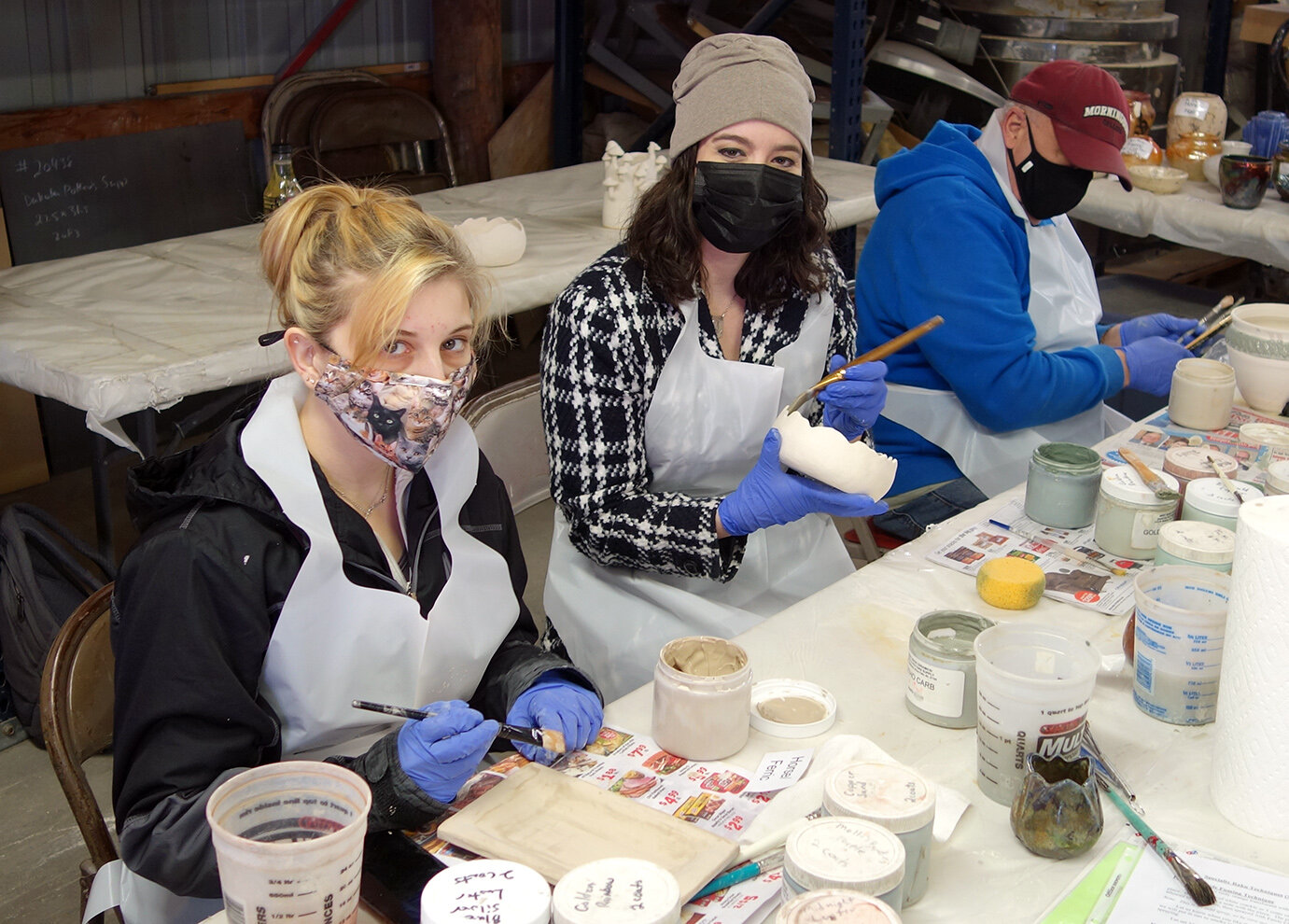
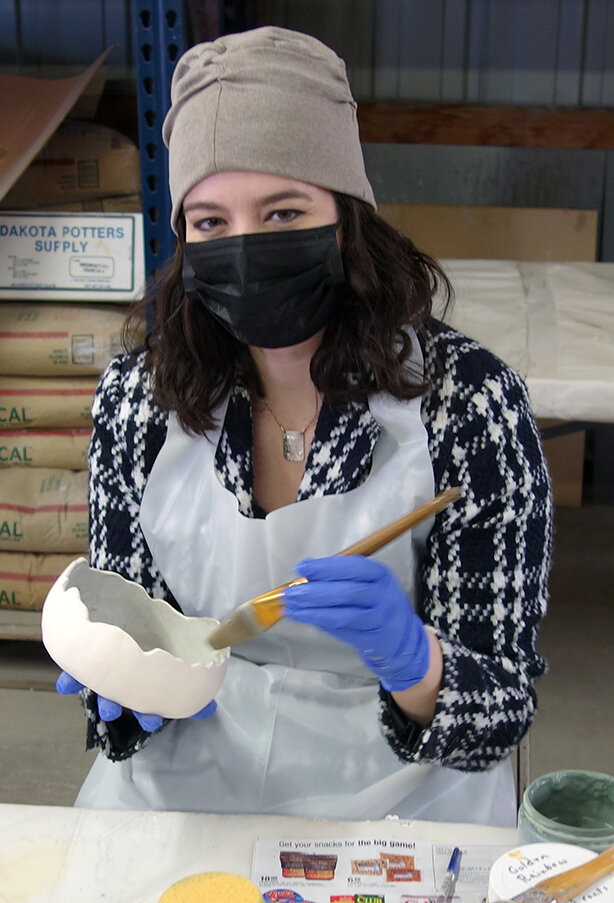
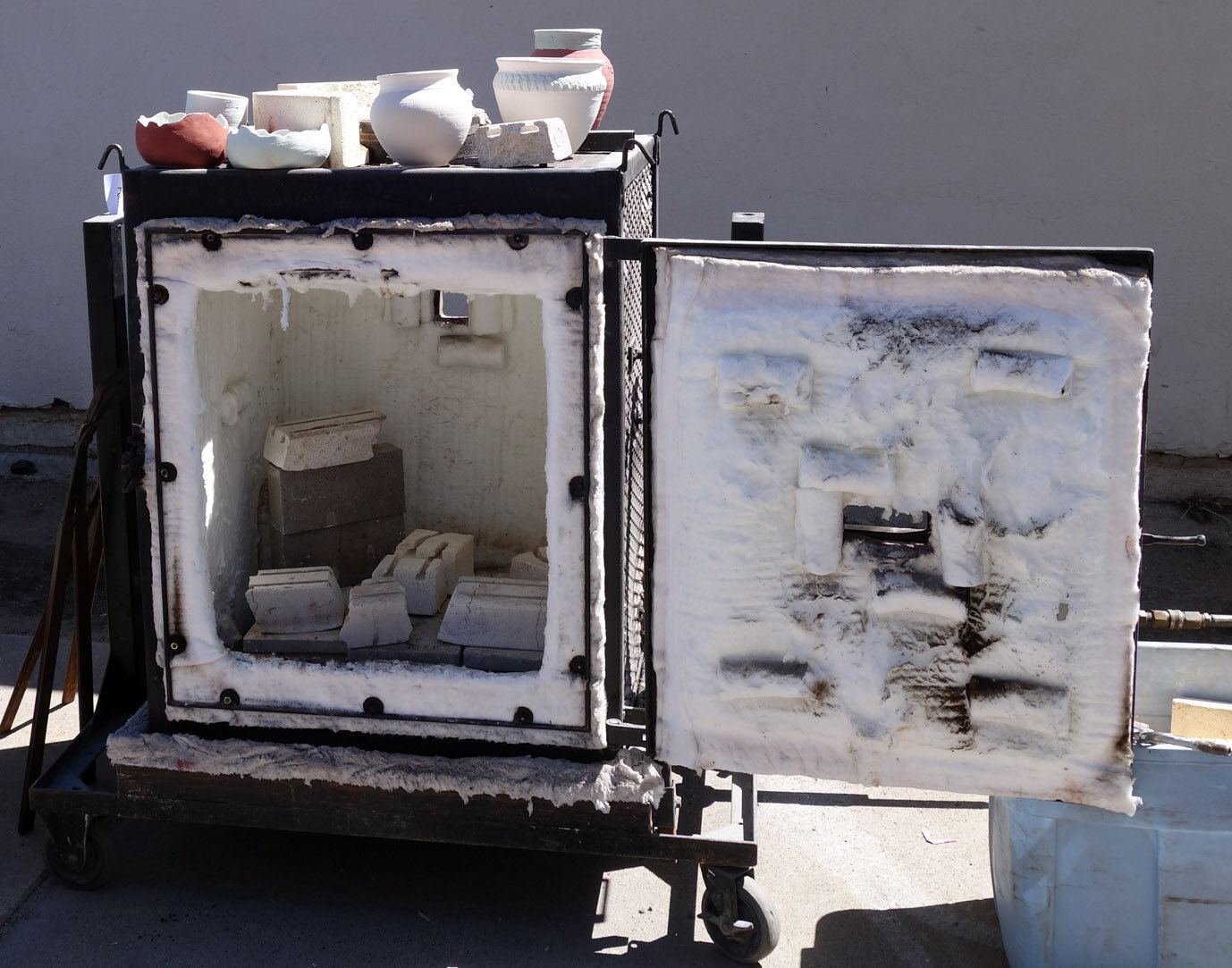
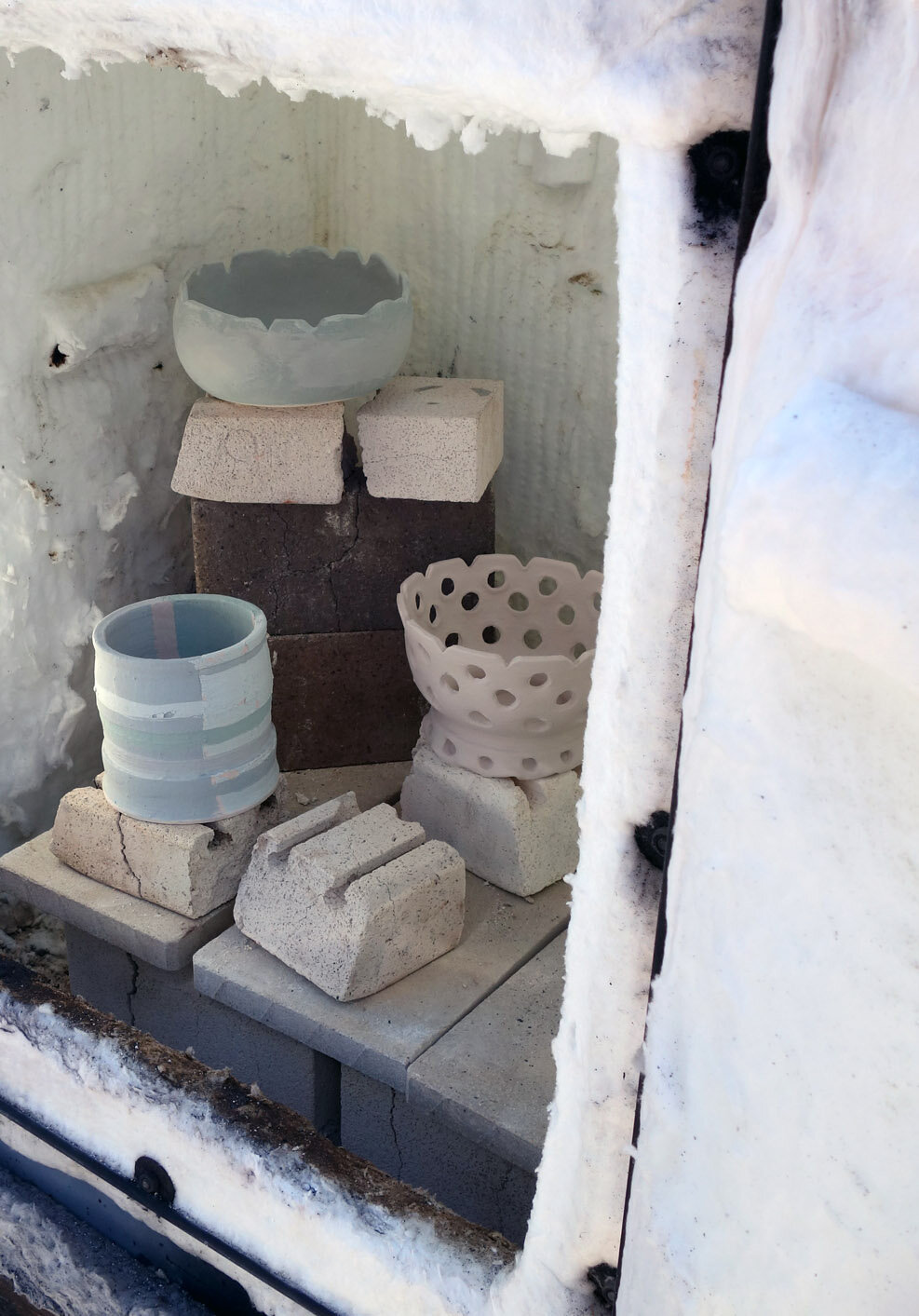
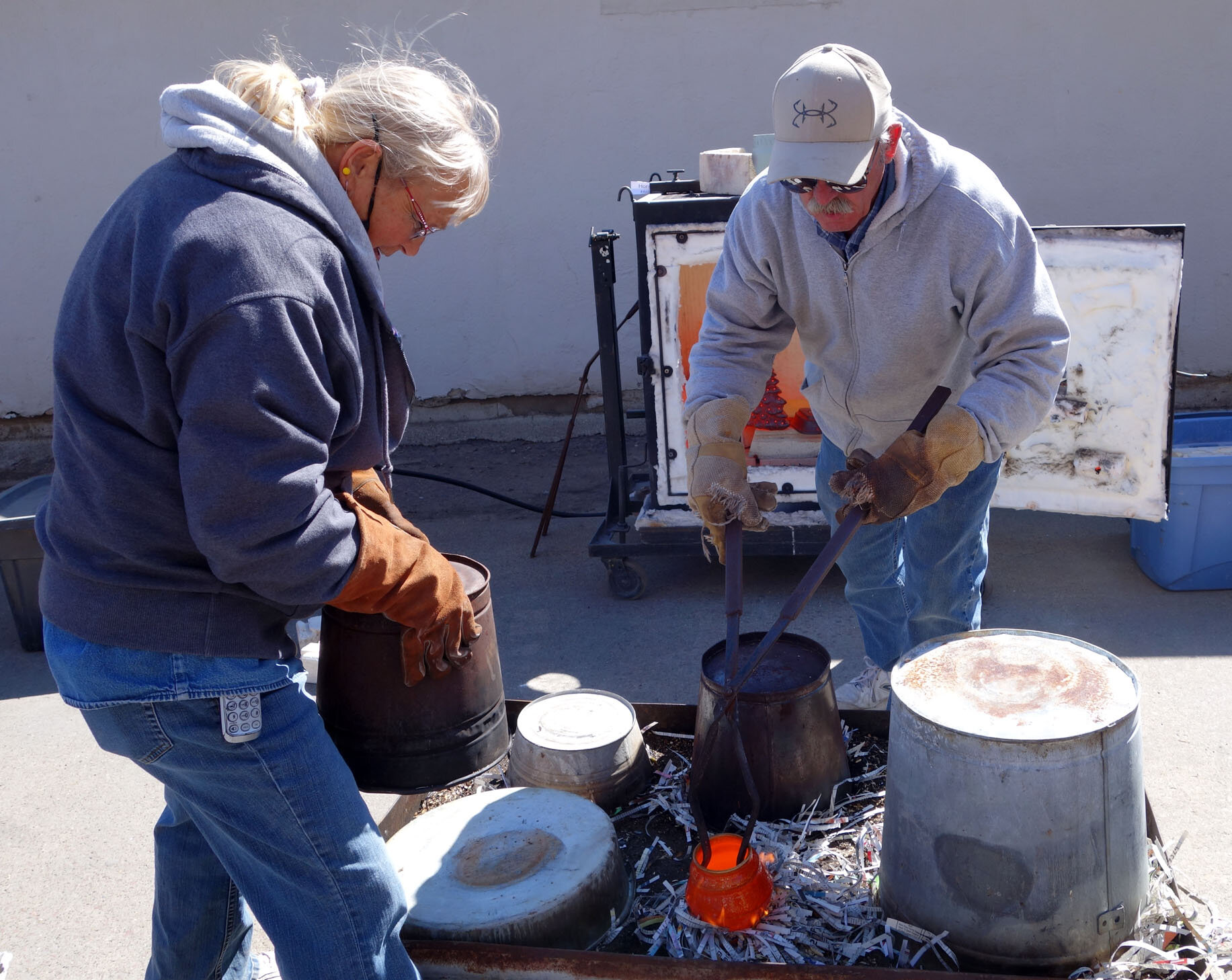
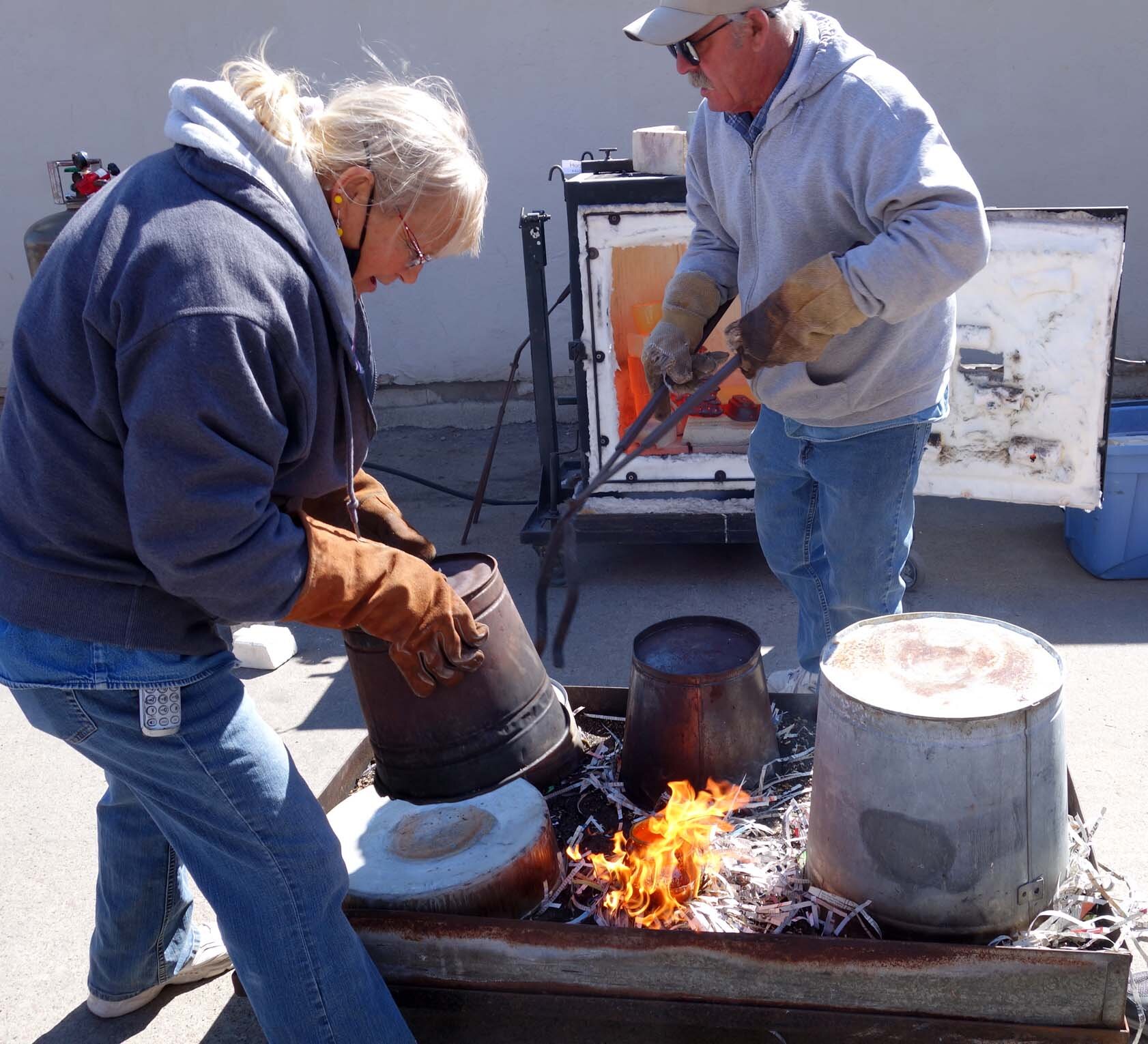
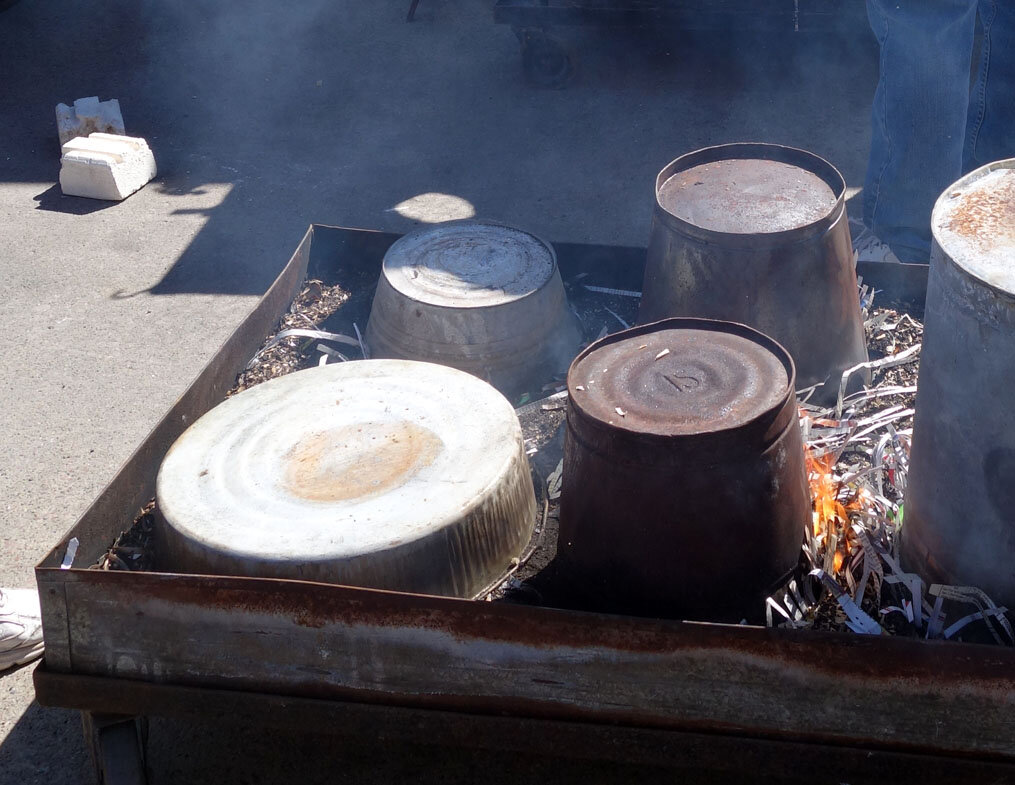
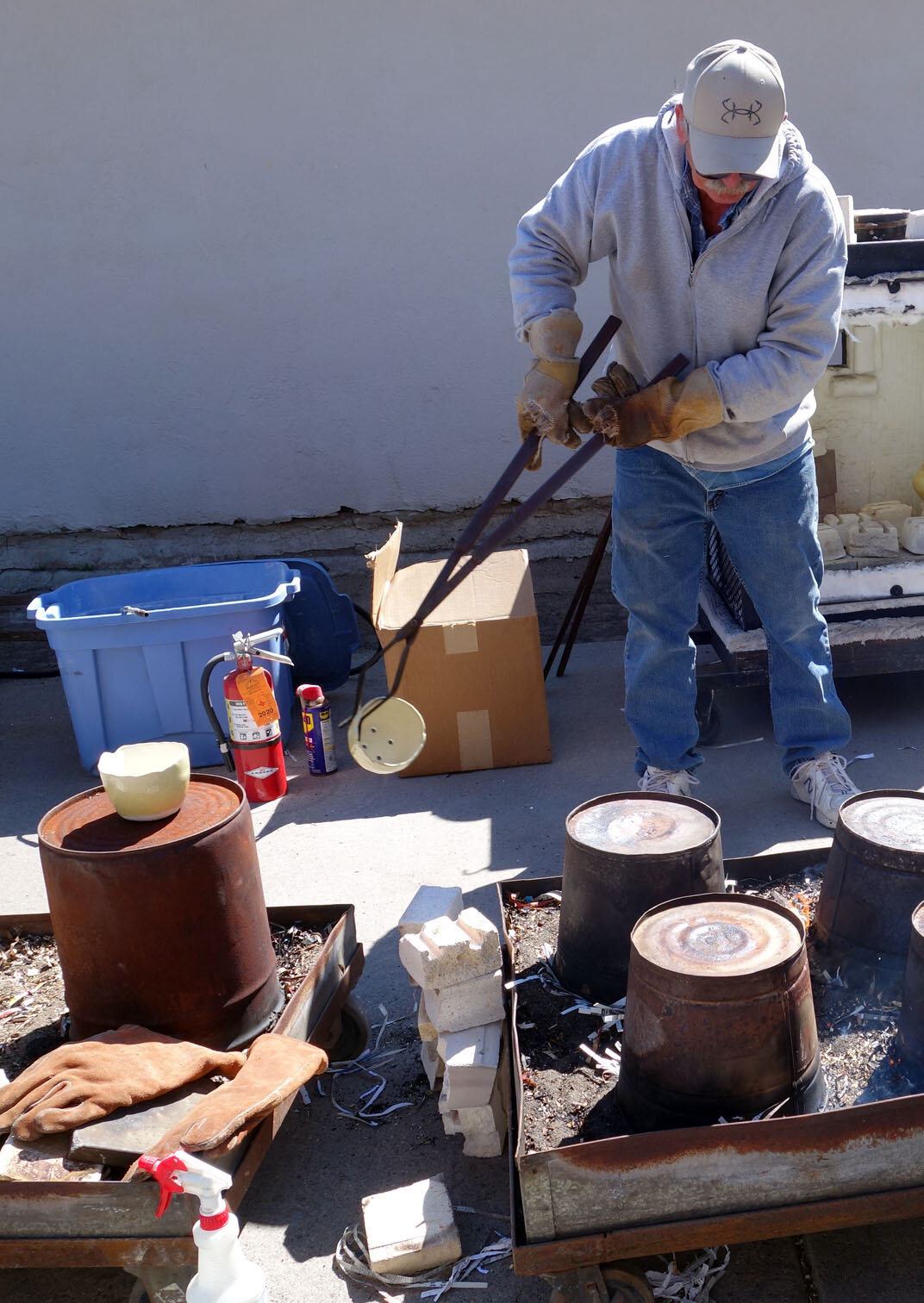
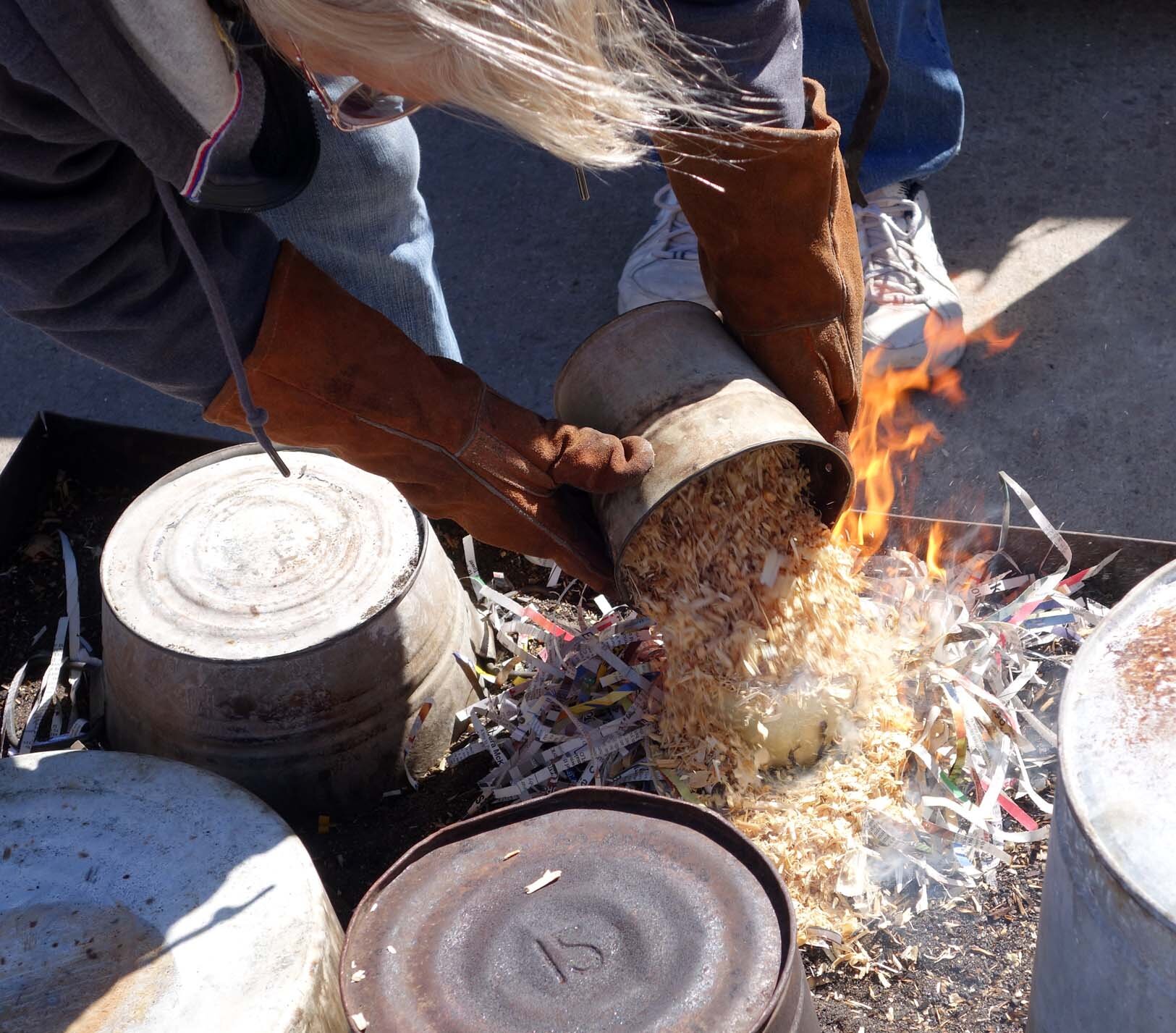
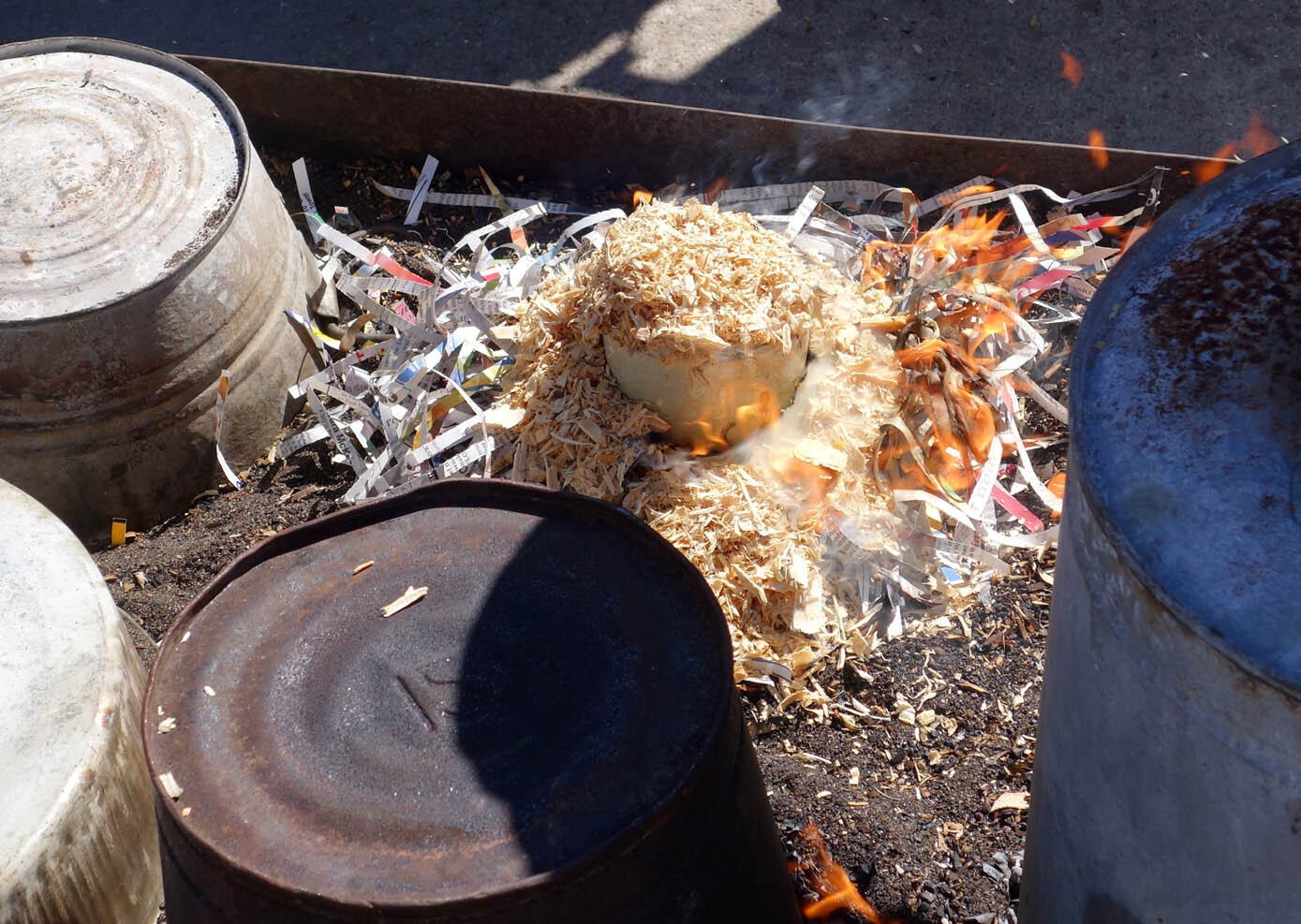
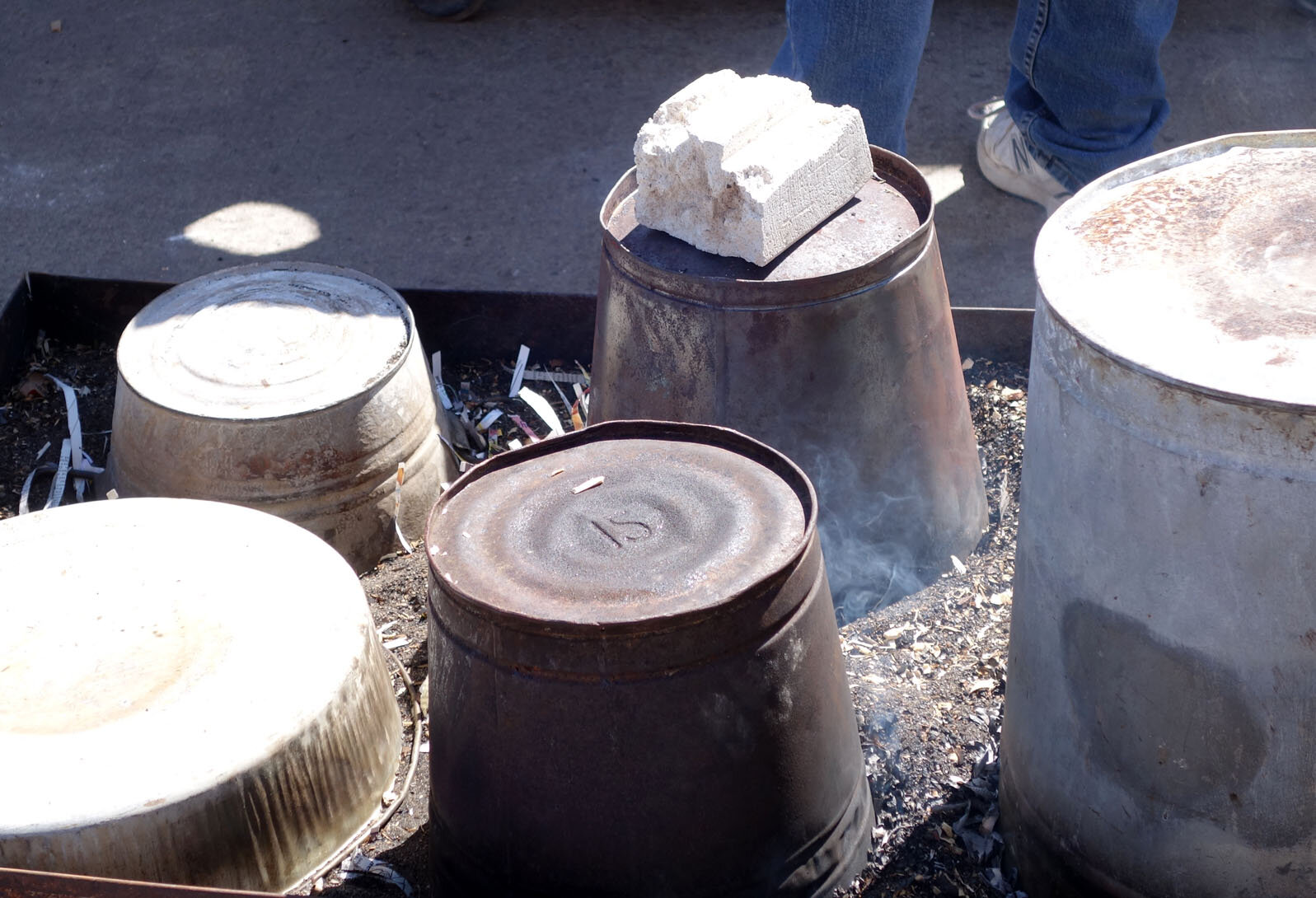
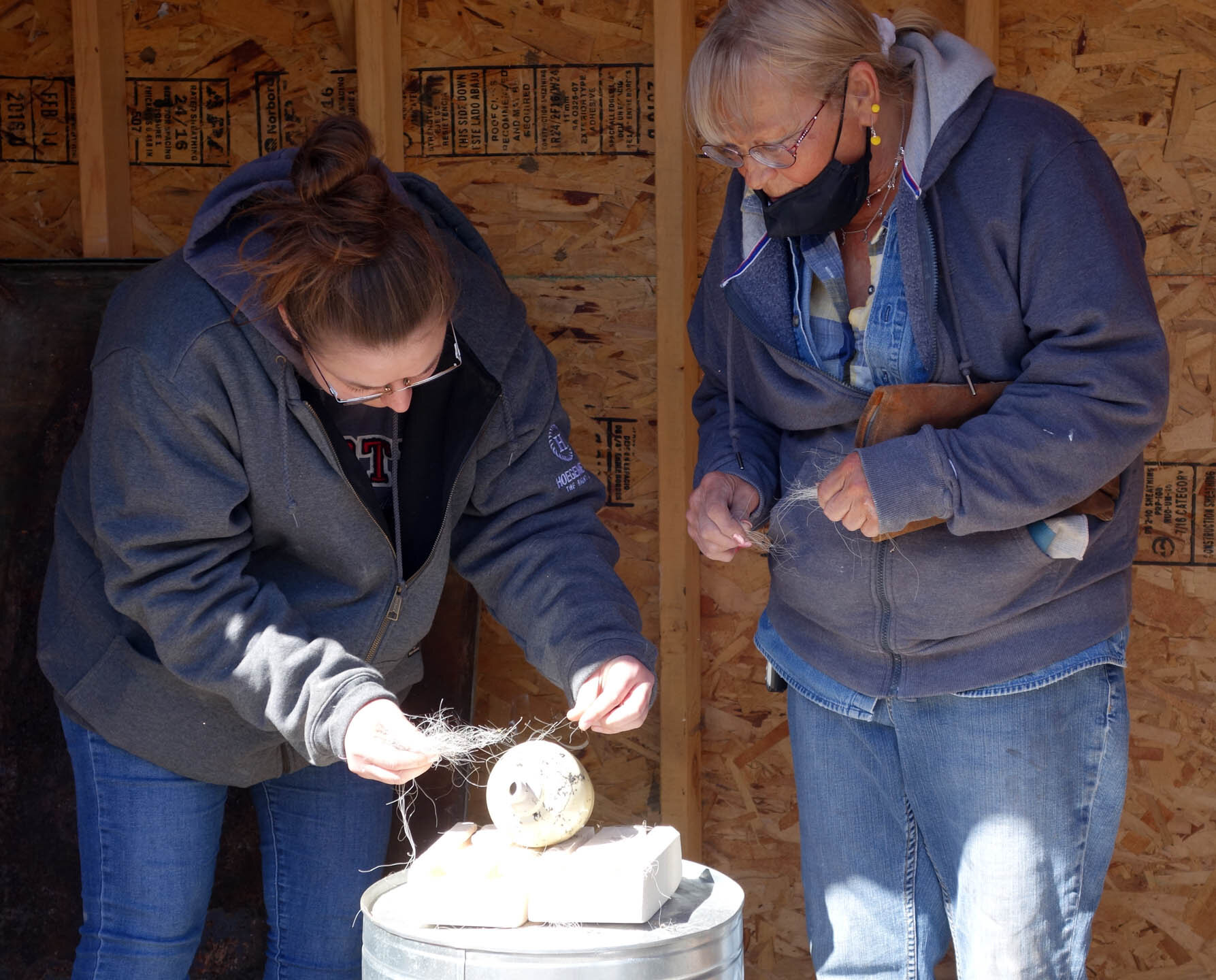
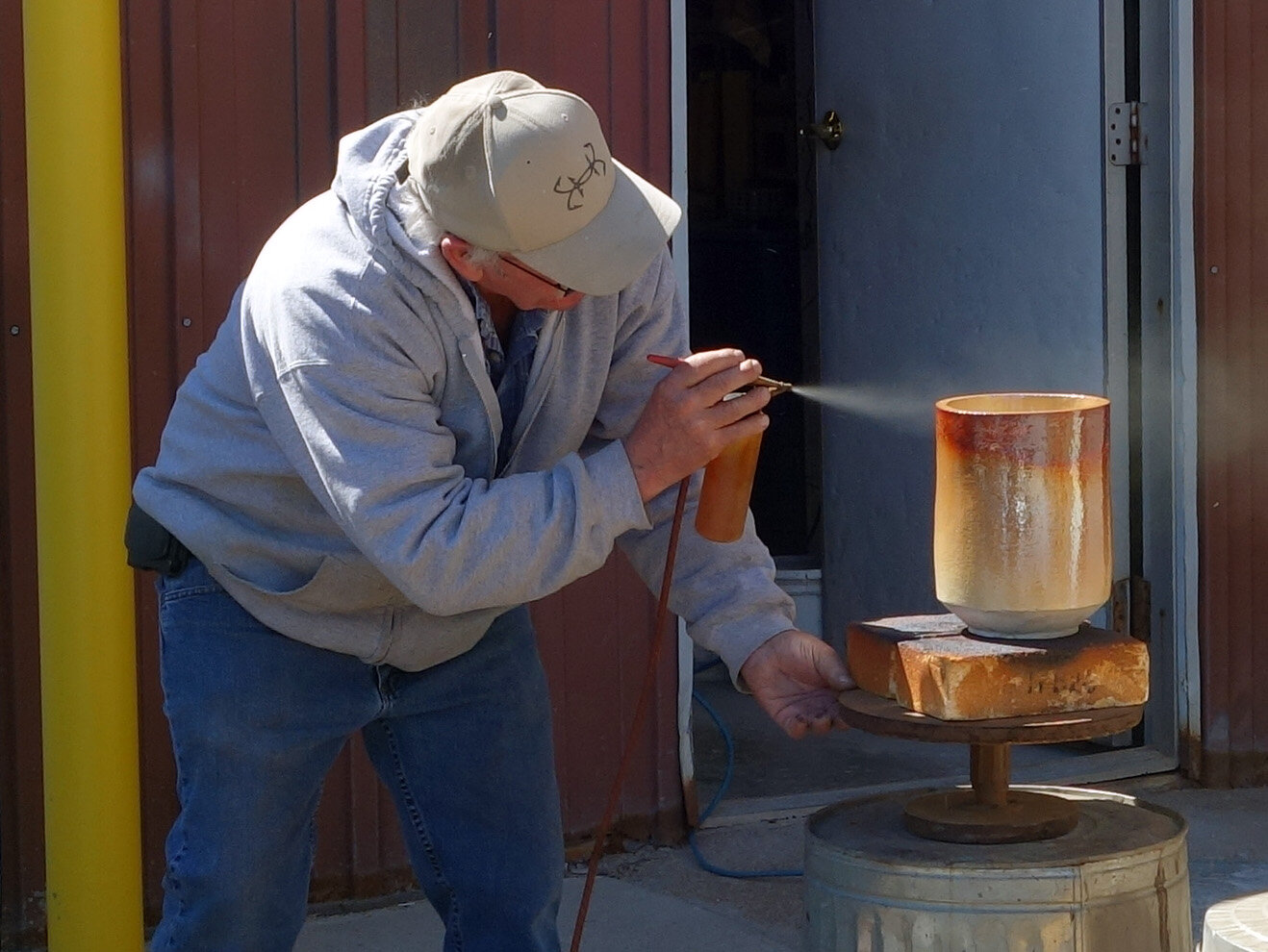
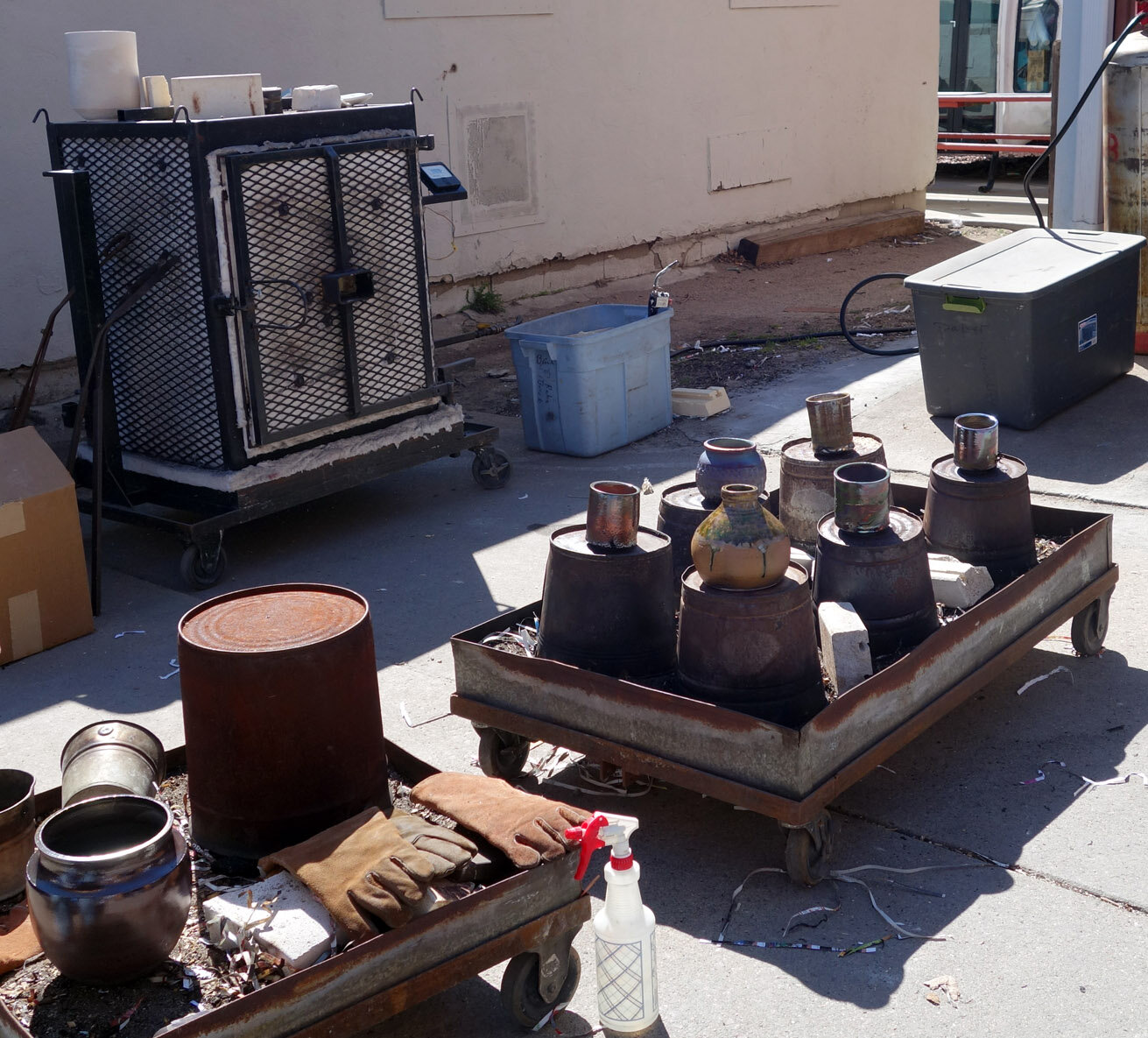
Upcoming Exhibition: Packard Group National Exhibition 2021
I have a painting, Comfort Zone, on display in the Packard Group National Exhibition 2021 in a drive-in movie art reception at No. 7 Center in Vermillion, SD, in addition to a virtual exhibition! The art reception will take place at 8:30pm on Friday, April 2nd, 2021, and on that same date an online gallery will open to viewers as well.
Gallery 110's Subversive Celebration: International Altered Card Exhibition
I’m participating in the Subversive Celebration: International Altered Card Exhibition at Gallery 110 in the Warren M. Lee Center of Fine Arts at the University of South Dakota, organized by artist Klaire A. Lockheart!
The show will be up from March 4-27, 2020, with an opening reception will be on March 4 from 5-7 pm. The gallery is located at 414 Clark Street, Vermillion, South Dakota 57069. An online gallery will be available through www.klairelockheart.com.











